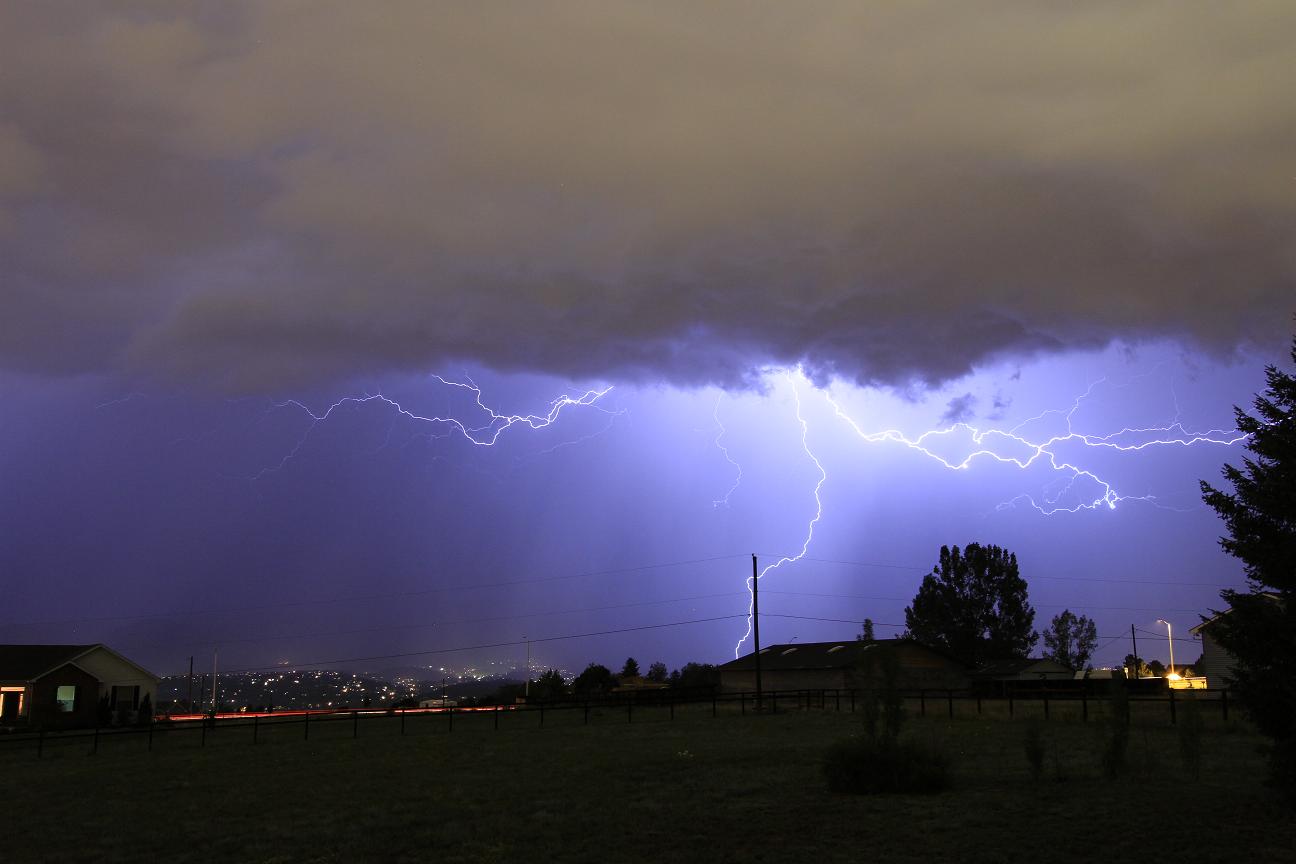Colorado Springs lightning
I've been working on my lightning images for about a month with some absolutely spectacular failures. 
Last week this storm came in and offered the perfect opportunity for me to make a go at it with what I've learned.
The EXIF data is intact. Basically I set the camera up on the back porch on a tripod, set manual focus, no IS and went to live view and focused on some distant lights, left it in live view to minimize mirror bounce and locked the cable release button down and let it shoot 30 second exposures one after the other as the storm raged over the front range.
Then I threw out 95% of the pictures
Here are the four best, though the mustard-colored sky is a bit distracting.
Thoughts? Suggestions?
Roak




Last week this storm came in and offered the perfect opportunity for me to make a go at it with what I've learned.
The EXIF data is intact. Basically I set the camera up on the back porch on a tripod, set manual focus, no IS and went to live view and focused on some distant lights, left it in live view to minimize mirror bounce and locked the cable release button down and let it shoot 30 second exposures one after the other as the storm raged over the front range.
Then I threw out 95% of the pictures
Here are the four best, though the mustard-colored sky is a bit distracting.
Thoughts? Suggestions?
Roak




[email]roakeyatunderctekdotcom[/email]
<== Mighty Murphy, the wonder Bouv!
<== Mighty Murphy, the wonder Bouv!
0
Comments
These are very impressive--looks like you learned your lesson well.
Colorado always seems to have "intense" thunder storms, especially when your up on a mountain!
I also agree on the crop suggestion.
http://bgarland.smugmug.com/
May I suggest a panoramic crop for your photos? And sizing them down a bit might help seeing them a bit better on a 1024x768 monitor, like most people have.
Hope this helps.
Roaks Lightning.jpg
http://bgarland.smugmug.com/
Problem is, I'm an old darkroom guy and I have to find the time to sit down and learn how to do everything I used to do in the darkroom years ago with software now!
Roak
Ps. Perhaps leaving a small, open bottle of stop bath next to the computer for that acrid scent will help in the transition?
<== Mighty Murphy, the wonder Bouv!
Just don't spill it in your keyboard.
As far as darkroom adjustment tools for the digital age, I am a big fan of Adobe Lightroom. It does just about everything you need for general post processing unless you want get into pixel poking or layers and masking that Photoshop provides.
I probably spend 95% of my PP time using Lightroom and seldom need to use Photoshop. Both are powerful tools. It just depends on if you want to be artistically creative or focus on the darkroom-like photo processing.
http://bgarland.smugmug.com/
What tool would handle posterization and solarization best?
I'm starting out small & simple and have Elements 8 sitting here in a box, waiting to be installed.
Roak
Ps. Here's a sample from a 35mm negative that hasn't see the light of day since about 1980. I just got an CanoScan 8800F and scanned it in and using the ArcSoft software that came with it was able to reproduce a two-tone, 8x10 print I did in College. Works better with three tones, which is what I want to re-create.
Of course, this took me about a minute in ArcSoft's PhotoStudio, and took me almost a week using Kodalith!
<== Mighty Murphy, the wonder Bouv!
http://bgarland.smugmug.com/
I agree with bgarland. Photoshop has posterization filters, and solarization is easily accomplished with a U-curve.
Why, oh why can't I get lightning into my camera?
Neal Jacob
[URL="http://nealjacob.com/twitter"]Twitter[/URL]|[B][URL="http://photos.nealjacob.com"]SmugMug[/URL][/B